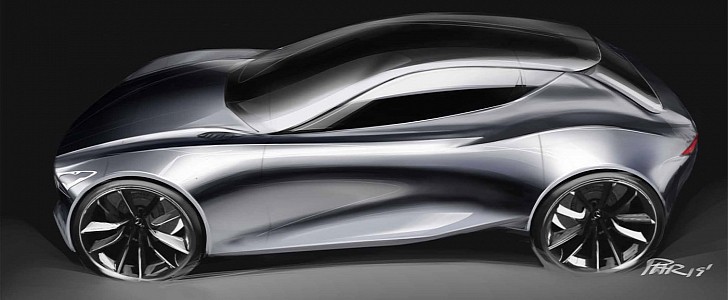The advent of EVs is more obvious now than it ever was before - and probably less so than it will be tomorrow - so we should get ready for more and more things to change over the coming years.
The architecture of an electric powertrain differs greatly from that of one using an internal combustion engine, and while most of the variations are positive, there are a few drawbacks to consider as well. For instance, the motors themselves are smaller and there is no need for a bulky transmission, meaning a lot of room can be freed up. That room can be turned into storage (see the "frunk") or a bigger cabin without increasing the vehicle's overall dimensions.
At the other end of the scale is the fact that, for the time being, EVs are much heavier than their ICE counterparts. Despite losing the big engine and transmission, their weight still goes up due to the large battery. Granted, most of that weight sits very low, pulling the gravity center down and favoring handling, but as anyone who's ever been overweight will tell you, you can't put a positive spin on carrying extra pounds around at all times.
This is why some manufacturers think that crossovers and SUVs are best suited for the use of electric powertrain. These types of vehicles are no strangers to fat-shaming, so it's nothing new to them. Plus, the battery pack sitting under the floor translates into a higher seating position - again, something SUVs have had since birth.
The future looks a lot less promising for vehicles such as the Mazda MX-5. The diminutive Japanese roadster is known for offering accessible driving thrills without the use of too much power. It does it by using a simple recipe: rear wheels for driving, front wheels for steering, the driver sitting close to the road, high-revving engine - all inside a lightweight package.
Out of the five elements, only two can be carried over in case of an electric conversion: the ones relating to the role of the two axles. You could argue for a third saying electric motors rev very highly too, but that would be beside the point.
Does that spell the end of the MX-5 model over the coming years? Unless there's a major leap in battery technology, we'd be surprised if it doesn't. However, instead of weeping crocodile tears, Paul Rosa decided to look at the alternatives.
He set out to create an electric vehicle with "practical proportions" that "captures Mazda's Kodo design philosophy." He called it the "MX-E" and while we can't give our verdict on the practical proportions bit, it sure looks like the sleek hatchback remains true to the current design theme showcased by the Japanese manufacturer.
The more you look at the MX-E, the easier it gets to imagine it with just two seats and no roof - it has the perfect wheelbase for that. The resulting vehicle may not meet the classic requirements of an MX-5, but this would be a new market, and a new market has new rules. We can't refer to the past, but the rest of the contemporary models. So maybe the MX-5 won't be dead after all, just transformed beyond recognition. Still plenty of fun, though.
At the other end of the scale is the fact that, for the time being, EVs are much heavier than their ICE counterparts. Despite losing the big engine and transmission, their weight still goes up due to the large battery. Granted, most of that weight sits very low, pulling the gravity center down and favoring handling, but as anyone who's ever been overweight will tell you, you can't put a positive spin on carrying extra pounds around at all times.
This is why some manufacturers think that crossovers and SUVs are best suited for the use of electric powertrain. These types of vehicles are no strangers to fat-shaming, so it's nothing new to them. Plus, the battery pack sitting under the floor translates into a higher seating position - again, something SUVs have had since birth.
The future looks a lot less promising for vehicles such as the Mazda MX-5. The diminutive Japanese roadster is known for offering accessible driving thrills without the use of too much power. It does it by using a simple recipe: rear wheels for driving, front wheels for steering, the driver sitting close to the road, high-revving engine - all inside a lightweight package.
Out of the five elements, only two can be carried over in case of an electric conversion: the ones relating to the role of the two axles. You could argue for a third saying electric motors rev very highly too, but that would be beside the point.
Does that spell the end of the MX-5 model over the coming years? Unless there's a major leap in battery technology, we'd be surprised if it doesn't. However, instead of weeping crocodile tears, Paul Rosa decided to look at the alternatives.
He set out to create an electric vehicle with "practical proportions" that "captures Mazda's Kodo design philosophy." He called it the "MX-E" and while we can't give our verdict on the practical proportions bit, it sure looks like the sleek hatchback remains true to the current design theme showcased by the Japanese manufacturer.
The more you look at the MX-E, the easier it gets to imagine it with just two seats and no roof - it has the perfect wheelbase for that. The resulting vehicle may not meet the classic requirements of an MX-5, but this would be a new market, and a new market has new rules. We can't refer to the past, but the rest of the contemporary models. So maybe the MX-5 won't be dead after all, just transformed beyond recognition. Still plenty of fun, though.






